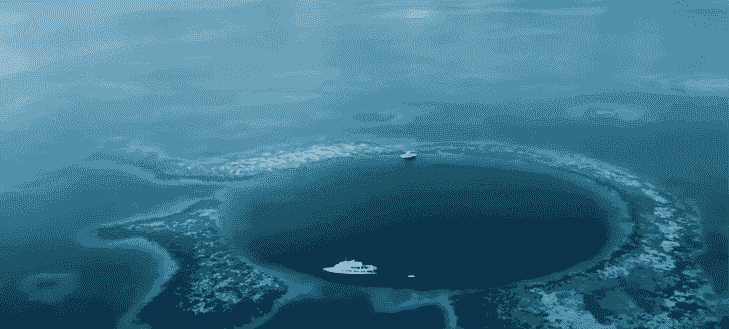
The recent identification of the world’s second-deepest blue hole has further enhanced the allure of the enigmatic realm of these underwater formations.
Led by guidance from local fishermen, researchers from Colegio de le Frontera Sur conducted an exploration of a tropical estuary situated off the southeastern coast of the Yucatan Peninsula in Mexico, resulting in the discovery of a vast blue hole.
Discovering the Taam ja’ Blue Hole
This impressive feature spans an area of 147,000 square feet and reaches a depth of 900 feet.
Comparatively, the Dragon Hole in the South China Sea, known as the world’s largest blue hole, is not considerably deeper than this newly uncovered one, measuring approximately 980 feet in depth.
In line with expectations, the scientists appropriately named their newfound phenomenon the Taam ja’ Blue Hole, using the Mayan term denoting profound water. Although the blue hole was initially identified in 2021, the researchers have recently presented a comprehensive account of their findings in a study published in Frontiers in Marine Science.
Characterized by a circular entrance located approximately 15 feet below sea level, the steep slopes of this formation create a prominent conical structure adorned with biofilms, sediments, limestone, and gypsum ledges.
Read more: SpaceX: Former NASA Astronaut And Paying Customers Embark On Space Journey
Unique Water Characteristics

According to the National Oceanic and Atmospheric Administration (NOAA), blue holes are submerged sinkholes composed of calcium carbonate rock known as karst. They serve as ecologically rich areas, hosting a diverse range of marine life, including corals, sponges, mollusks, sea turtles, sharks, and more.
Our understanding of blue holes is constrained by accessibility challenges, which can arise from small openings, considerable depths, and limited oxygen levels, necessitating the use of specialized equipment for safe exploration.
Due to the holes being situated below sea level, the karst walls obstruct the movement of tides, leading to a unique amalgamation of water characteristics within the holes.
The study reveals that the Taam ja’ blue hole displays significant variations in water properties due to temperature and salinity gradients.
Hydrographic profiles indicate the presence of a stratified water column, featuring a layer with low oxygen levels positioned atop a gas-rich layer, which is then followed by a layer with virtually no oxygen.
These gas-rich environments, permeated by hydrogen sulfide, do not eradicate all life but rather provide a habitat for more extreme forms of biology that thrive in oxygen-depleted areas.
The extraordinary amalgamation of water properties and biological life found in holes entices scientists to delve into the depths and unravel further knowledge about their composition and the organisms capable of existing within them.
Read more: Meta: Licensing Talks With Magic Leap’s AR Technology, According To Reports

